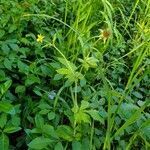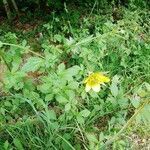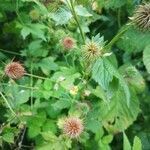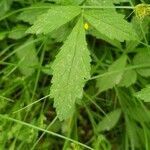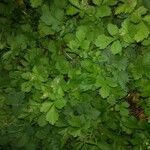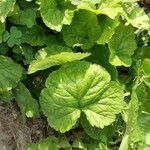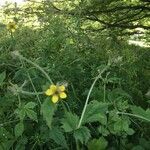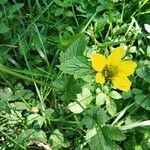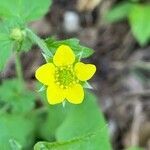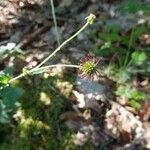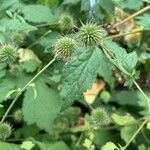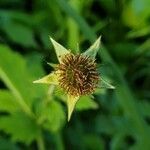A small plant that keeps growing from year to year. It grows 60 cm high and spreads 50 cm wide. The stems are erect, hairy and branching. The leaves at the base have leaf stalks. They are harp shaped with leaflets along the stalk and double teeth around the edge. The lower stem leaves have 3 lobes and the upper leaves are simple. The flowers are yellow. They are small and occur singly. They occur at the ends of branches and have 5 petals.
